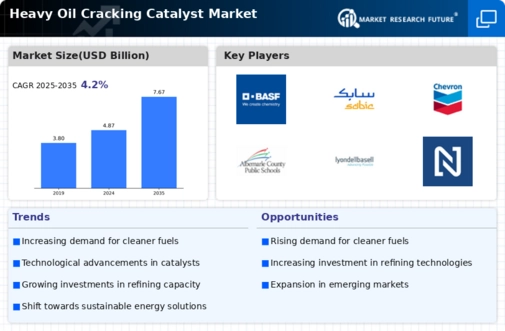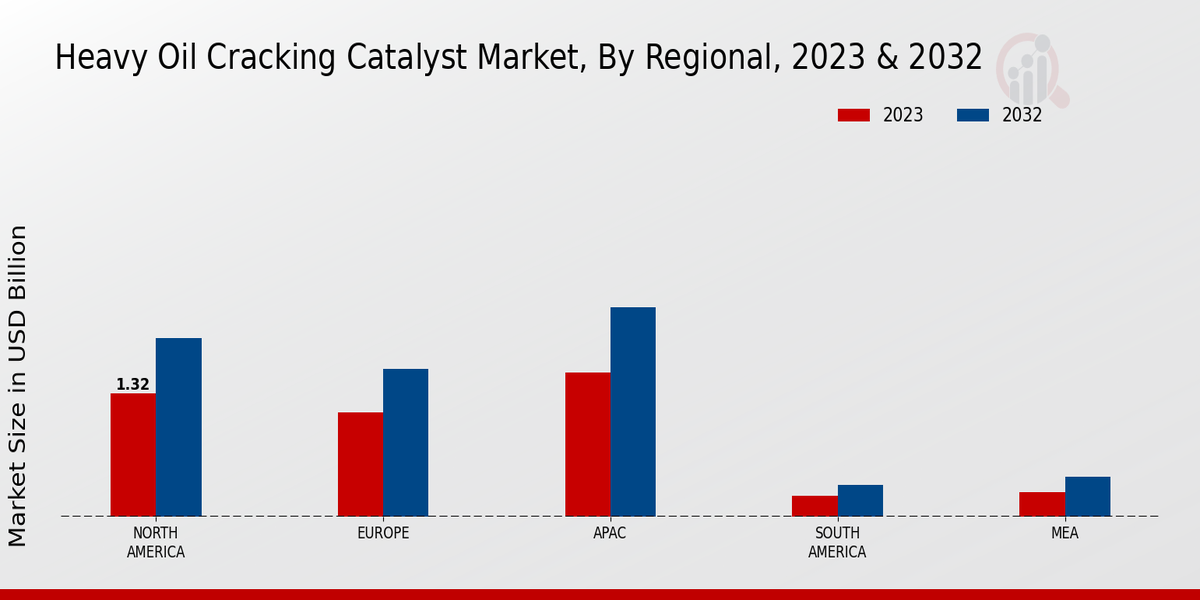Market Trends and Projections
Increasing Demand for Fuel Oil
The Global Heavy Oil Cracking Catalyst Market Industry is experiencing a surge in demand for fuel oil, driven by the growing energy needs of developing economies. As countries industrialize, the consumption of heavy oil as a feedstock for refining processes is likely to rise. This trend is underscored by projections indicating that the market could reach 4.87 USD Billion in 2024, reflecting a robust appetite for efficient refining solutions. The increasing reliance on heavy oil in various sectors, including transportation and power generation, further propels the need for advanced cracking catalysts that enhance yield and reduce emissions.
Global Energy Transition Initiatives
The Global Heavy Oil Cracking Catalyst Market Industry is also influenced by global energy transition initiatives aimed at reducing reliance on traditional fossil fuels. While the shift towards renewable energy sources is evident, heavy oil remains a critical component of the energy mix in many regions. The need for efficient conversion processes to minimize environmental impact drives the demand for advanced cracking catalysts. As countries balance energy needs with sustainability goals, the market is poised for growth, potentially reaching 7.67 USD Billion by 2035, reflecting the ongoing evolution of the energy landscape.
Regulatory Pressure for Cleaner Fuels
The Global Heavy Oil Cracking Catalyst Market Industry is increasingly influenced by stringent environmental regulations aimed at reducing emissions from fossil fuels. Governments worldwide are implementing policies that mandate cleaner fuel production, which necessitates the use of advanced cracking catalysts. These catalysts facilitate the conversion of heavy oils into lighter, cleaner fuels that comply with regulatory standards. As a result, refiners are compelled to invest in innovative catalyst technologies, thereby driving market growth. The anticipated market size of 7.67 USD Billion by 2035 underscores the importance of regulatory frameworks in shaping industry dynamics.
Rising Investment in Refinery Upgrades
Investment in refinery upgrades is a significant driver for the Global Heavy Oil Cracking Catalyst Market Industry. As refiners seek to enhance operational efficiency and adapt to changing market demands, the adoption of advanced cracking catalysts becomes imperative. Upgrading existing facilities with state-of-the-art technologies not only improves yield but also aligns with sustainability goals. This trend is reflected in the projected market growth, with an expected increase to 4.87 USD Billion in 2024. The focus on modernization and efficiency in refining processes is likely to sustain momentum in catalyst demand.
Technological Advancements in Catalysts
Technological innovations in catalyst formulations are playing a pivotal role in shaping the Global Heavy Oil Cracking Catalyst Market Industry. Enhanced catalyst performance, characterized by improved selectivity and stability, is essential for maximizing output from heavy oil feedstocks. Recent developments have introduced novel materials and processes that optimize the cracking process, potentially leading to higher profitability for refiners. As the industry evolves, the market is projected to grow at a CAGR of 4.21% from 2025 to 2035, indicating a strong correlation between technological advancements and market expansion.























